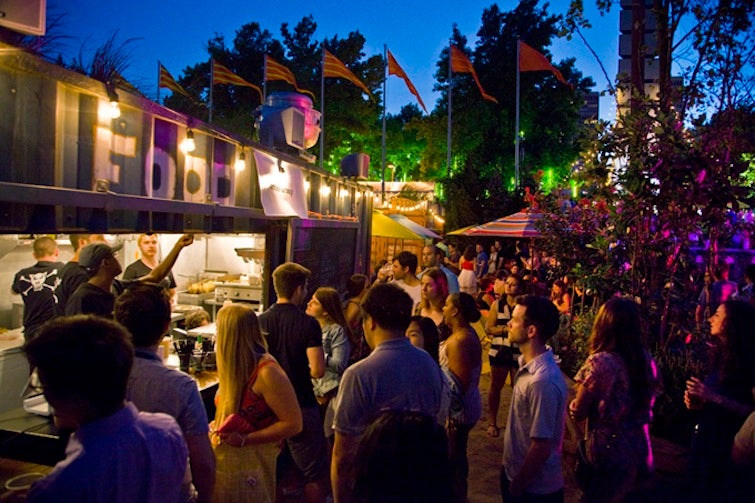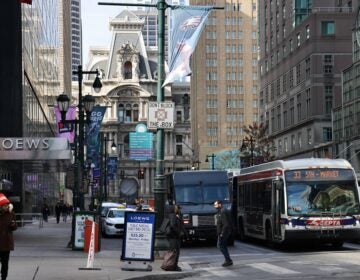Would a new pop-up “industry” be a bad thing for Philly?

One interesting wrinkle to watch in the debate over pop-up beer gardens is the disagreement between Rep. John Taylor and John Longacre of the Philadelphia Tavern Owners Association over how widespread the pop-up phenomenon should be.
In Jim Saksa’s article on pop-up garden economics, Longacre is notably not arguing that the state should clamp down on pop-ups to protect the value of R license assets. Just the opposite – he wants to see pop-ups everywhere, and just wants all bars to have access to the same cheap permits that non-profits like PHS get to use:
To be fair, Longacre doesn’t want to see the pop ups get their licenses taken away – he just wants the PLCB to let bars create their own pop up beer gardens at the cheaper rate, too. “If this was standardized … I think it would be great,” he said. “I think the anomalistic beer gardens would be far less anomalistic. They would be all over the neighborhoods and that’d be great.”
By contrast, Rep. John Taylor told Holly Otterbein at Newsworks that’s precisely the scenario he’s worried about:
“How do I stop these things if they’re unwanted, if they’re in neighborhoods right on top of other residents and things?” he said. “This could start an industry that we didn’t intend all over the place. They wouldn’t be always the nice atmosphere that people have seen.”
Seeing as the law already allows any R license holder to use the catering permits just like the pop-up gardens are (Fergie’s had no trouble getting a permit to create an outdoor seating area next door), it appears that there are no legal barriers to Rep. Taylor’s dystopic vision of ubiquitous outdoor bar seating.
But would this really be a bad thing for the city?
The South Street West Business Association told Jim Saksa many area businesses are reporting higher sales on the stretch of South Street where PHS’s beer garden is. Is there a reason why neighborhood commercial corridors would benefit from outdoor beer gardens in Center City, but not in Fishtown, or Roxborough, or Powelton Village?
Some writers have panned the backlash against Rep. Taylor and his compatriots as a reflection of Millennials’ selfish political priorities, but two articles out this week make the case for taking the larger issue pop-ups raise – how liquor license costs stifle economic development in struggling neighborhood commercial corridors – more seriously.
Over at This Old City, former Philadelphian and planner Greg Meckstroth explained the role of liquor license policy in turning Melbourne, Australia’s laneways into lively pedestrian-scale commercial corridors:
“Relaxing of liquor licenses encouraged small bars to sprout up, often in retrofitted laneways (alleys) that by nature featured smaller scaled commercial spaces perfect for local businesses. The city was lucky to still have these thoroughfares intact but at that time they were in disrepair. Under the Gehl (Danish architect Jan Gehl) guidance they were transformed from auto-oriented alleys to pedestrian-only public spaces packed full of bars, restaurants and shopping.”
As we explained in our post on the county quota system, liquor license prices doubled between 2002 and 2013 in Philadelphia County. That overhead cost is the same whether you’re opening a bar at 13th and Walnut, or Broad and Germantown.
But while it might be feasible to finance an $85,000 liquor license for your new gastropub at 13th and Walnut, that price doesn’t work if you want to open a less fancy eatery with a beer list at Broad and Germantown, so fewer places open.
If low liquor license prices make it easier to fill neighborhood commercial corridors with restaurants and bars, and high liquor license prices make that harder, then low-overhead attractions like seasonal pop-up beer gardens are arguably more important to neighborhoods outside the core than to the high foot-traffic, high-investment corridors in Center City. This year the gardens have all been in greater Center City, but where will they pop up next year?
Harris Steinberg of PennPraxis made this point to the Daily News today, citing the Fringe Festival as an example of a pop-up event that helped create the conditions for sustained reinvestment in Old City:
And, points out Harris Steinberg, they introduce citizens to new areas of the city.
“When you combine art, development and economics in new, interesting projects, they draw people to places they might not otherwise visit,” says the executive director of Penn Praxis.
A new survey from Sasaki Associates covered in City Lab this week bolsters this argument, adding some heft to the intuitive point that restaurants and bars are often the leading edge of neighborhood reinvestment. They found that “a new restaurant is the top reason nearly half of those surveyed would venture out to explore different parts of their city.
If Rep. Taylor is concerned about the potential for nuisance activity, or community input on the siting of the beer gardens, these are certainly legitimate issues to be debated at city level. As for the state’s role, the potential upsides for commercial corridors suggested by Jim Saksa’s article seem to call for a light touch, or possibly no touch, on the cheap catering permits.
WHYY is your source for fact-based, in-depth journalism and information. As a nonprofit organization, we rely on financial support from readers like you. Please give today.






